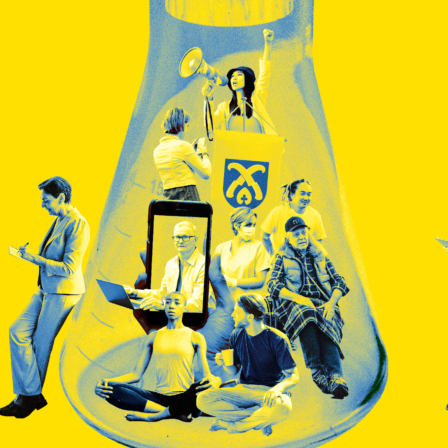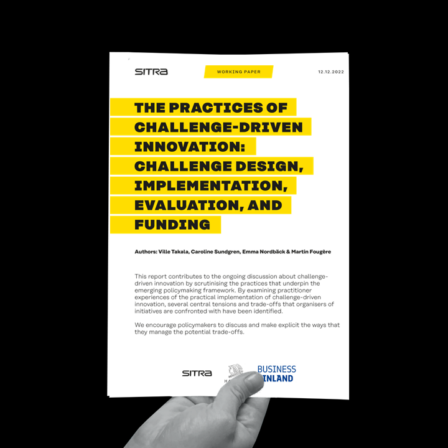Creating innovations based on the market logic contain the notion that successful development work will scale and thus be able solve problems. Behind this is an idea of technological innovation that can be a narrow product or service that can be replicated to serve the scope that is needed.
Global and societal challenges are often so complex and broad that it’s not possible to solve them using single experiments or projects. The type of innovation required for these types of challenges are often referred to using the concepts of systemic change Systemic change Systemic change refers to the simultaneous reform of operational models, structures and their interactions, which are used to create the prerequisites for future welfare and sustainable development. Open term page Systemic change , systems innovation and systems transformation. They seek to extend the notion of innovation from single-point solutions to multiple, intertwined initiatives that change behaviour and structures in addition to the collaborative organisations working together in networks or their more established form, innovation ecosystems. These systems approaches highlight the ways we can develop together and act towards uncertain futures.
The systems approaches can be described as a spaghetti where single activities are combined to others actively in ways that compose an impactful whole and where building the relationships between the actors in the system is done intentionally. An interesting, emerging approach to make spaghetti is innovation portfolios which are used internationally by some pioneering organisations such as EU’s leading climate innovation initiative EIT Climate-KIC.
During the spring of 2020 Sitra’s societal training organised a series of workshops with an international angle. The goal of the series was to explore innovation management practices useful in promoting systems transformation by engaging in the experiences of EIT Climate-KIC and the UN Development Programme UNDP. The result of the series of workshops was the Radical uncertainty requires radical collaboration – Stepping stones towards systems transformation with innovation portfolios (pdf) memorandum.
The memorandum highlights innovation portfolio practices and the shift in thinking they require, five principles, that expand on the nature of innovation management needed to support systems transformation.
Five principles to impact using innovation portfolios
1. From operating in certainty to living with uncertainty
Most of the practices we’re accustomed to in organising and working support us in situations where we can analyse problems, develop plans to solve them and execute the plans. But when we must deal with uncertainty, we need different type of thinking to guide our actions.
2. From operating at the timespans of planning to resourcing transformation in the world
We often organise work in ways where money and resources are allocated on the basis of planned programmes or projects. What if the transformation we wish to see in the world doesn’t happen in the timespan we’ve set for our initiatives? What does long-term or perpetual financing look like that has transformation as its purpose? Innovation portfolios seek to promote this broader perspective that is often missing from the project mentality.
3. From organisation-centricity to ecosystemic impact
A programme or project done by a single organisation often fulfils a small part or that transformation that is needed to change systems. What is we had the visibility into and capability to coordinate collaboration between multiple organisations? How could an ecosystem achieve broader impact by taking a long-term perspective but also pooling their collective resources and activities? In combining finance and management practices innovation portfolios seek to use their means in strengthening collaboration between organisations.
4. From single-point solutions to initiatives with synergies
When we’re dealing with uncertainty, we can’t plan for the desired end result but rather learn our way towards the impact we’d like to see. In addition to this when we consider that single-point solutions will not take us where we want to go, we need ways of learning between initiatives. The projects and experiments within innovation portfolios can form a collection of initiatives with synergies that help them have shared impact.
The initiatives can tackle different aspects of the challenge at hand. For example some of them might promote the laws and markets needed to utilise citizen-generated solar power. Other initiatives might seek to create easily adoptable solar panel systems and changing consumer behaviour. The innovation portfolio can serve as a context where the synergetic logic of the collection of the initiatives can be designed.
5. From work as implementation to continuous collaborative sensemaking
Helping the initiatives learn from each other within the innovation portfolio requires developing practices that bring people together and make sense of what they are learning. Reports are good for summarising key points but they often lack many of the contextual issues that we can pick up from each other’s authentic stories. Sharing those help people create linkages between insights and each other.



















Read more
Food for the mind.